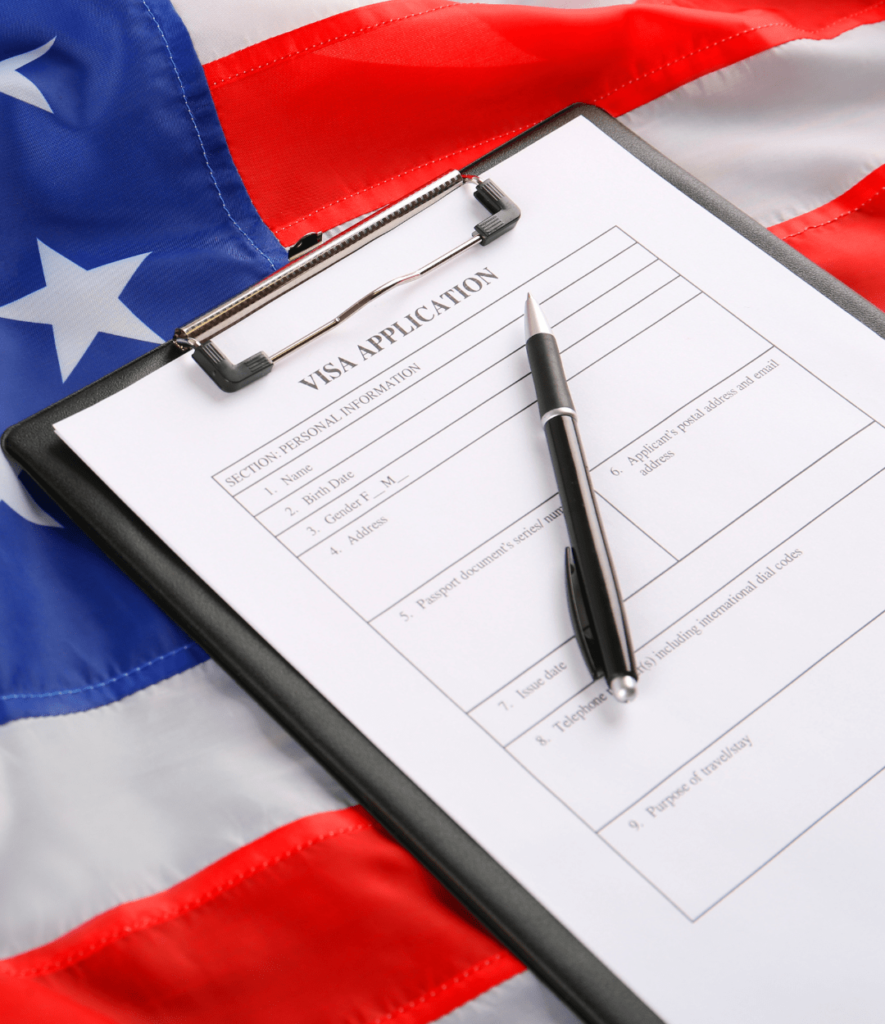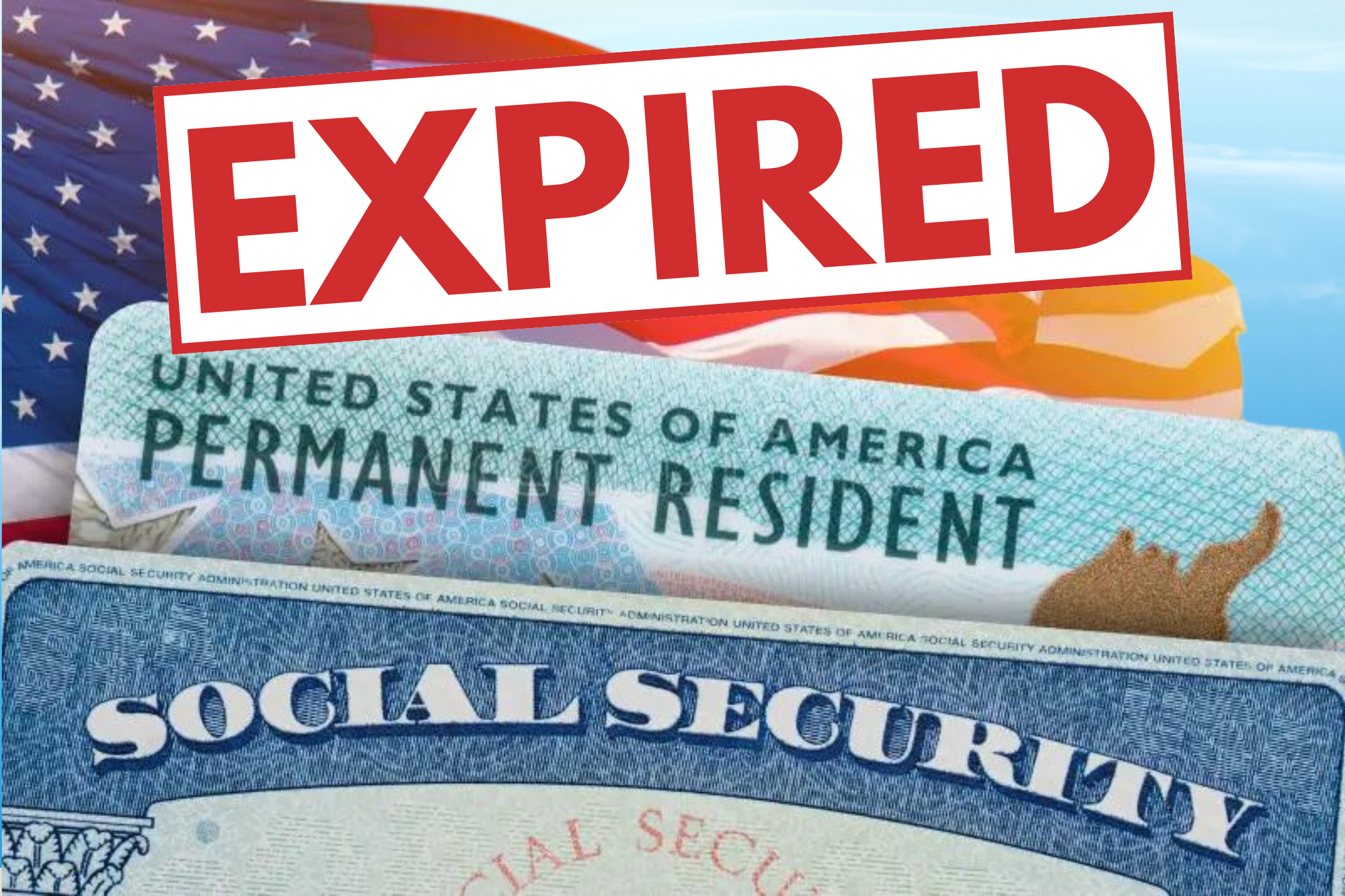Are you considering immigrating to the United States of America (USA)?
It’s a monumental decision that can open up a world of opportunities. However, we understand that the immigration process can seem daunting. That’s why we, at the Law Office Of Abhisha Parikh, are here to guide you through the intricacies of immigrating to the USA.
Understanding the Process of Immigrating to the US
Before embarking on the immigration journey, it is crucial to understand the process and the different elements involved. The more you know, the smoother your journey will become.
Immigrating to a new country is a life-changing decision that requires careful consideration and planning. Whether you are seeking a better life, pursuing educational opportunities, or joining your family, understanding the immigration process is essential to ensuring a successful transition.
Different Types of Visas For Immigrating
Each year, an unlimited number of visas become available for immediate relatives of U.S. citizens. To qualify, individuals in this category must meet standard eligibility criteria, while petitioners must fulfill specific age and financial prerequisites.
Immediate relatives encompass the following groups:
- Spouses of U.S. citizens.
- Unmarried minor children of U.S. citizens (below 21 years old).
- Parents of U.S. citizens (the petitioner must be at least 21 years old to sponsor a parent).
Conversely, the family preference system offers a restricted number of visas annually. Those aspiring to immigrate within this system must meet the regular eligibility criteria, with petitioners also needing to satisfy age and financial requirements. The family preference system comprises:
- Adult children (both married and unmarried) and siblings of U.S. citizens (the petitioner must be at least 21 years old to sponsor a sibling).
- Spouses and unmarried children (both minors and adults) of Lawful Permanent Residents (LPRs).
To maintain a balance in the number of immigrants entering based on family relationships, Congress devised a complex method to calculate the available family preference visas for each year. This calculation begins with 480,000 (the maximum number allocated in principle for all family-based immigrants). Then, we subtract the prior year’s count of immediate relative visas issued and the number of aliens who were “paroled” into the U.S. during the same period. Afterward, any unused employment preference immigrant slots from the previous year are added to this total. This establishes the pool of visas available for distribution through the family preference system.
For admission through the family-based immigration route, a U.S. citizen or LPR sponsor must submit a petition for the individual relative, establish the authenticity of the relationship, meet minimum income requirements, and sign an affidavit of support, committing to financially support the family member(s) upon immigrating to the U.S.
Family-Based and Employment-Based Visas
Family-Based visas are for individuals who have close relatives in the U.S. This category allows U.S. citizens and permanent residents to sponsor their immediate family members, including spouses, parents, and children.
Employment-Based visas target individuals who have received a job offer in the U.S. This category aims to attract skilled workers and professionals to contribute to the country’s economy.
Temporary Visa
Visas for temporary employment-based situations allow employers to bring in foreign nationals for specific jobs for a limited period. Generally, these temporary workers must remain with the employer who sponsored them and usually have limited options to change jobs. The range includes over 20 visa types for temporary nonimmigrant workers. These encompass L-1 visas for internal corporate transfers, various P visas catering to athletes, entertainers, and skilled performers. R-1 visas for religious workers, diverse A visas for diplomatic staff, O-1 visas for exceptionally talented individuals, and multiple H visas accommodating both highly skilled and less-skilled labor.
The criteria for each visa type differ in terms of qualifications needed, duration, allowance for dependents, and other relevant factors. When their status ends or their employment terminates, most of these workers must leave the U.S. In certain cases, based on the nature of the job and the foreign national’s qualifications, an employer might be able to sponsor the worker for permanent employment. It’s worth noting that a foreign national doesn’t need to be currently employed by the sponsoring company to be eligible for sponsorship. Depending on the foreign national’s current nonimmigrant status and the desired permanent immigration category, they might be able to navigate the steps toward becoming a Lawful Permanent Resident (LPR) while staying and working in the U.S.
Permanent Immigration
The maximum annual limit for permanent employment-based immigrants stands at 140,000. This count includes the immigrants themselves along with their qualifying spouses and minor unmarried children. Consequently, the actual count of employment-based immigrants each year falls below 140,000.
To determine the available visas for allocation through the employment-based system, we add any unused family preference immigrant numbers from the prior year to this cap. Then, we distribute the available visas across five preference categories. For certain categories, the sponsoring entity must assess the U.S. labor market in accordance with guidelines set by the Department of Labor. The Secretary of Labor must also confirm that the petitioner’s application meets specific criteria before the sponsor can proceed to file a petition with U.S. Citizenship and Immigration Services (USCIS).
In other categories, the sponsor’s initial step is to submit a petition to USCIS, or the foreign national may initiate a self-petition. The final phase involves the foreign national applying for an immigrant visa at a U.S. embassy or consulate overseas, or applying to adjust their status to become an LPR if they are legally in the U.S. For consular processing, the immigrant visa application can only be filed after USCIS approves the immigrant petition. In the case of adjustment of status, the timing for filing the application depends on whether an available visa number is deemed immediately accessible.
Limits on Immigrating from Specific Countries
Beyond the numerical restrictions imposed on different immigration preference categories, the INA also sets a cap on the number of immigrants from any single country coming to the U.S. Currently, no individual group of permanent immigrants (combining family-based and employment-based categories) from a single nation can surpass seven percent of the total immigrant inflow to the U.S. in a fiscal year. This quota isn’t designed to ensure representation for a specific nationality; instead, it’s a restriction aimed at preventing any one immigrant group from disproportionately dominating immigration patterns to the U.S.
The Diversity Lottery
Established by the Immigration Act of 1990, the Diversity Visa Program offers a unique immigrating route to individuals from nations with limited historical U.S. immigration. Annually, 55,000 visas are granted via a computer-generated lottery to citizens of countries contributing fewer than 50,000 immigrants in the past five years.
Within this quota, approximately 5,000 visas are designated for the Nicaraguan Adjustment and Central American Relief Act program, which assists specific pre-designated asylum seekers. Consequently, the effective annual cap for diversity visas stands at 50,000.
While initially favoring Irish immigrants (with over 40% of visas in the first three years allocated to them), the program now allocates visas regionally, notably benefiting Africans and Eastern Europeans.
Eligibility mandates a high school education or its equivalent, or a minimum of two years’ recent work experience in a field demanding at least two years of training. Moreover, spouses and minor unmarried children of primary applicants can also join as dependents.
Refugees and Asylees

Refugees are accepted into the United States when they are unable to return to their home countries due to a “well-founded fear of persecution”. Entry is based on factors like race, being part of a specific social group, political beliefs, religion, or nationality.
These individuals apply for entry from outside the U.S., often from a “transition country” that is not their home nation. Various factors determine the admission of refugees, including the level of risk they face, their membership in a group of particular concern to the U.S. (annually designated by the president and Congress), and whether they have family members already in the U.S.
On a yearly basis, in consultation with Congress, the president establishes the maximum limit for refugee admissions. This overall cap is then divided into specific limits for different global regions.
Asylum is an option for individuals already present in the United States who are seeking protection based on the same five grounds that refugees rely upon. They have the opportunity to apply either at a designated entry point when they’re seeking admission or within one year of their arrival in the U.S. Unlike refugees, there is no set limit on the number of people who can be granted asylum annually. There are also no specific predefined categories for determining eligibility.
Both refugees and those granted asylum can become Lawful Permanent Residents (LPRs). This is only one year after their admission to the United States as refugees or one year after they’ve been granted asylum.
U.S. Citizenship
To be eligible for U.S. citizenship through the process of naturalization, an individual must have held Lawful Permanent Resident (LPR) status, commonly known as a green card, for a minimum of five years. However, if the green card was acquired through a U.S. citizen spouse or via the Violence Against Women Act (VAWA), the requirement is reduced to three years. Certain exceptions exist, including members of the U.S. military who serve during periods of war or officially declared hostilities. Those applying for U.S. citizenship must be at least 18 years old, demonstrate a consistent record of residency, exhibit “good moral character”. They must also successfully pass English and U.S. history as well as civics exams (with specific exemptions), and fulfill other stipulated criteria such as paying an application fee.
The Role of the U.S. Citizenship and Immigration Services (USCIS)
The United States Citizenship and Immigration Services (USCIS) is responsible for managing immigration to the U.S. The agency processes visa applications, manages residency and citizenship petitions, and enforces immigration laws.

When applying for a visa, it is essential to follow the immigrating guidelines and instructions provided by the USCIS. This includes submitting the required forms, supporting documents, and fees. Failure to comply with the USCIS requirements can result in delays or even denial of your application.
Applicants must typically correspond with the USCIS throughout their immigration process. This may involve providing additional evidence, attending interviews, or responding to requests for further information. It is important to maintain open communication with the USCIS and promptly address any inquiries or concerns they may have.
The Immigration Timeline
The timeline for immigration to the U.S. can vary greatly. It can take anywhere from a few months to several years, depending on your specific circumstances and the type of visa for which you apply.
Visa category, the number of applications received, and the efficiency of the USCIS can affect the processing time. It is crucial to start the immigration process as early as possible to allow for any unexpected delays or complications.
Having all your documents ready, correctly filing your application, and preparing for your visa interview can accelerate the process. It is important to be proactive and organized throughout the immigration journey to ensure a smooth and successful transition to your new life in the United States.
Preparing Your Immigration Application
Preparing your immigration application is a crucial part of the process. Attention to detail is key, as even minor errors can cause significant delays or rejection of your application.
When it comes to the immigrating process, there are several important steps to consider. Let’s closely examine each one to ensure you have a comprehensive understanding of what is required.
Gathering Necessary Documents For Immigrating to the U.S.
Firstly, you will need to gather all the necessary documentation. This often involves providing birth certificates, passports, medical records, criminal records, financial statements, and letters of sponsorship, among other documents. It is important to have these documents ready before starting your application.
Each document plays a crucial role in supporting your application and providing evidence of your eligibility. For example, birth certificates and passports establish your identity and nationality. On the other hand, Medical records demonstrate your overall health and ability to contribute to the host country’s healthcare system.
Furthermore, criminal records and financial statements help immigration authorities assess your character and financial stability. This ensures that you will abide by the laws of your destination country. It also means you will not become a burden on its social welfare system.
Note that if any of your documents were issued in a different language, you must provide corresponding English translations. This ensures that immigration officials can easily review and understand the contents of your application.
Filling Out Your Application Form

The application form you will need to fill out depends on the type of visa you are seeking. This form will usually request information about your background, work history, reason for immigrating, family connections in the U.S., and more.
Accuracy and thoroughness are vital when filling out your application form. Any mistakes or omissions can lead to delays or even rejection. It is crucial to review all the information you provide before submitting your application to ensure its completeness and accuracy.
Remember, the application form serves as a platform for you to present your case to immigration authorities. It is your opportunity to showcase your qualifications, skills, and reasons for seeking immigration. Therefore, take your time to provide detailed and well-thought-out responses that align with the requirements of the visa you are applying for.
Paying Your Application Fees For Immigrating
The visa application process comes with various fees determined by the United States Citizenship and Immigration Services (USCIS). These fees cover the cost of processing your application, biometrics, and potentially other services.
Before submitting your application, it is essential to understand the fees associated with your specific visa category. These fees can vary depending on factors such as the type of visa. It also depends on the complexity of your case, and the services you require.
Remember that if your application is rejected for any reason, you typically won’t receive a refund for these fees. Therefore, it is crucial to ensure that everything is in order before submitting your application. Double-check that you have included all the necessary documents, completed the application form accurately, and paid the required fees.
By taking the time to gather the necessary documents, fill out your application form meticulously, and pay your fees promptly, you increase your chances of a successful immigration application. Remember, the immigration process can be complex, but with careful preparation, you can navigate it successfully and embark on a new chapter of your life in your desired destination.
The Interview Process
Once your application is submitted and accepted, you will be scheduled for a visa interview at your nearest U.S. embassy or consulate.
The visa interview is a crucial step in the immigration process. It is an opportunity for the embassy or consulate to assess your eligibility for the visa you have applied for. During this interview, you will have the chance to demonstrate your intentions, plans, and qualifications.
Scheduling Your Interview

After your application is processed, you will receive an invitation to schedule your visa interview. The specific scheduling process varies by location. You should read the instructions provided by your local U.S. embassy or consulate carefully.
It is important to note that the visa interview slots can fill up quickly, especially during peak seasons. Therefore, it is advisable to schedule your interview as soon as possible to secure your preferred date and time. While it may be tempting to schedule your interview immediately, it is crucial to give yourself ample time to prepare.
Use the time leading up to your interview to gather all the necessary documents and information. Review your application thoroughly, and familiarize yourself with the requirements and expectations of the visa interview.
Important Links:
- Find a U.S. Embassy or Consulate: Locate the nearest U.S. embassy or consulate where you will attend your visa interview and find contact information.
Preparing for Your Interview
During the interview, the interviewer will likely inquire about your reasons for immigrating. You will also asked your plans once you reach the U.S., and your background. It is essential to prepare for this interview as if it were a job interview. Dress formally, be respectful, and bring all necessary documents, including any additional evidence supporting your visa application.
Research common interview questions and practice your answers. Reflect on your motivations for immigrating and think about how you can articulate them effectively. Consider your future plans in the U.S. and prepare to discuss them confidently. Additionally, gather any relevant documents that can substantiate your claims and support your application.
Remember that the interview is an opportunity to make a positive impression and showcase your eligibility for the visa. Approach it with confidence, maintain a professional demeanor, and be ready to provide clear and concise answers.
U.S. Customs and Border Protection (CBP): Familiarize yourself with the U.S. CBP, the agency responsible for securing the borders and facilitating lawful trade and travel.
What to Expect During Your Interview
The interview generally lasts about 20 to 60 minutes. It depends on various factors such as the complexity of your case and the visa category you are applying for. Prepare to encounter a series of questions designed to assess your eligibility for the visa you have applied for.
The consular officer conducting the interview will assess your credibility, sincerity, and intentions. They may ask about your background, education, work experience, ties to your home country, and reasons for wanting to travel to the U.S. It is crucial to answer all questions truthfully and concisely.
If you don’t understand a question, do not hesitate to ask for clarification. It is better to seek clarity than to provide an incorrect or misleading answer. The consular officer will assist you throughout the interview process and ensure that they obtain all relevant information.
Remember, the visa interview is an opportunity to demonstrate your qualifications and eligibility for the visa. Approach it with confidence, honesty, and thorough preparation.
Important Links:
- U.S. Department of State Visa Appointment Wait Times: Check the current visa appointment wait times at U.S. embassies and consulates worldwide to plan your interview schedule.
- U.S. Department of State Visa Bulletin: Stay updated on visa availability and priority dates in the Visa Bulletin, which determines when visas can be issued to applicants.
After Your Application is Approved
Once your application has been approved, there are a few final steps to take before your big move.
Receiving Your Visa
Once approved, you can either have your visa mailed to you or pick it up at the U.S. embassy or consulate. You should keep this crucial document safe. When you travel to the U.S., you will need to present this visa at the port of entry.
Note that the visa does not guarantee your entry into the U.S. It gives you permission to arrive at a port of entry and request admission.
Plan For Immigrating to the USA
Once you have received your visa, you can begin planning your move to the USA. This includes logistical tasks such as selling or storing belongings, arranging travel, finding accommodation, and enrolling your children in school if applicable.
Moving to a new country is a significant life change, and careful planning can lessen the stresses associated with relocating.
Understanding Your Rights and Responsibilities as a New Immigrant
As a new immigrant in the USA, you have both rights and responsibilities. Your rights include freedom of speech, the right to a prompt, fair trial by jury, and the right to worship (or not worship) as you choose.
In conclusion, while the path to immigration can seem complex and lengthy, proper understanding and careful preparation can make the journey much smoother. Good luck on your immigration journey!
Schedule a consultation with Law Office Of Abhisha Parikh today to get personalized guidance and support.
For more immigration resources and information about our services, visit our website: immigrationvision.com
Feel free to reach out to us anytime at (732)-379-4866 or via email at [email protected].
More Important Websites to Visit:
- Social Security Administration (SSA): Understand the Social Security system and how to obtain a Social Security Number (SSN) upon arrival in the U.S.
- Internal Revenue Service (IRS): Get familiar with the U.S. tax system and find resources for filing your taxes as a new immigrant.



